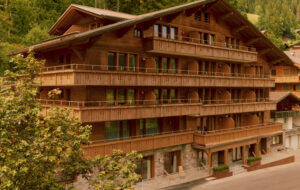|
Cabinet with sliding doors |
||
|
Lex Pott’s limited-edition wooden products are created from a single Douglas fir, with each sandblasted to leave a decorative grille effect Lex Pott let a surface treatment dictate the uses of Diptych, an eight-piece collection of Douglas fir products and furniture for design company New Window. Finding that he could sandblast thin planks of quarter-sawn wood, with the effect of blowing away the softer rings of tree and leaving the hard, the Dutch designer was able to create a range of pieces with an intricate grille effect. “When I start a project I always begin with these very abstract decorative translations [of the material],” Pott explains. “Later on, as soon as I have the technique controlled, I start to incorporate function.” On the larger pieces – a room divider and series of wall cabinets – the sandblasting has been kept to the confines of a perfect geometric shape. Squares, rectangles and circles put the tree’s wavy lines of grain and occasional knot in sharp contrast.
The sandblasting process leaves fine gaps between the wood’s hard winter rings Pott used CNC-cut rubber stickers to mask out the shapes: “The sand bounces back from the rubber, but eats through the wood when it’s left unprotected,” he explains. The industrial process leaves an unexpectedly delicate pattern that is entirely unique to the tree. In summer, a tree produces a ring of softwood and in winter a hard one; thicker gaps in the wood indicate a good summer when the tree was able to grow well. “It’s almost a show of the tree’s DNA,” Pott says. “You can see how the climate was behaving and what was happening over a period of 25 to 50 years. And you see it much more clearly with this transparent quality, than by just looking at the grain. I like how the pieces have this slight irregularity that is partly defined by nature and partly by design.”
The collection ranges from large screens to match books Prizing surface treatment over function has given varied results. The mixing of horizontal and vertical grains on the cabinet doors, for example, is particularly delightful: one slides discreetly behind the other like the screen window in a priest’s confessional. But the smaller pieces, hair combs and a set of matches, leave you wondering whether their delicate nature is up to the task. “I was worried that the wood would become super fragile,” Potts says. “But, in the larger pieces the hard parts of grain act as ribs, they give rigidity and make the objects surprisingly strong.” The combs and matches have been included to provide a range of affordability. “I always appreciate when someone can buy an idea for €20, or €10,000. That’s always been a big thing for me.” The first collection – each piece comes branded with a “1” – has all been produced from the same tree from the forests of Veluwe, an hour from Amsterdam. Pott and New Window founder Woes van Haaften plan to purchase further trees if and when the first batch sells out. “We were searching for a new formula to make the furniture exclusive but not limited. And we thought about the book industry, where the first edition is always the most special.” |
Word Riya Patel |
|
|
||





















